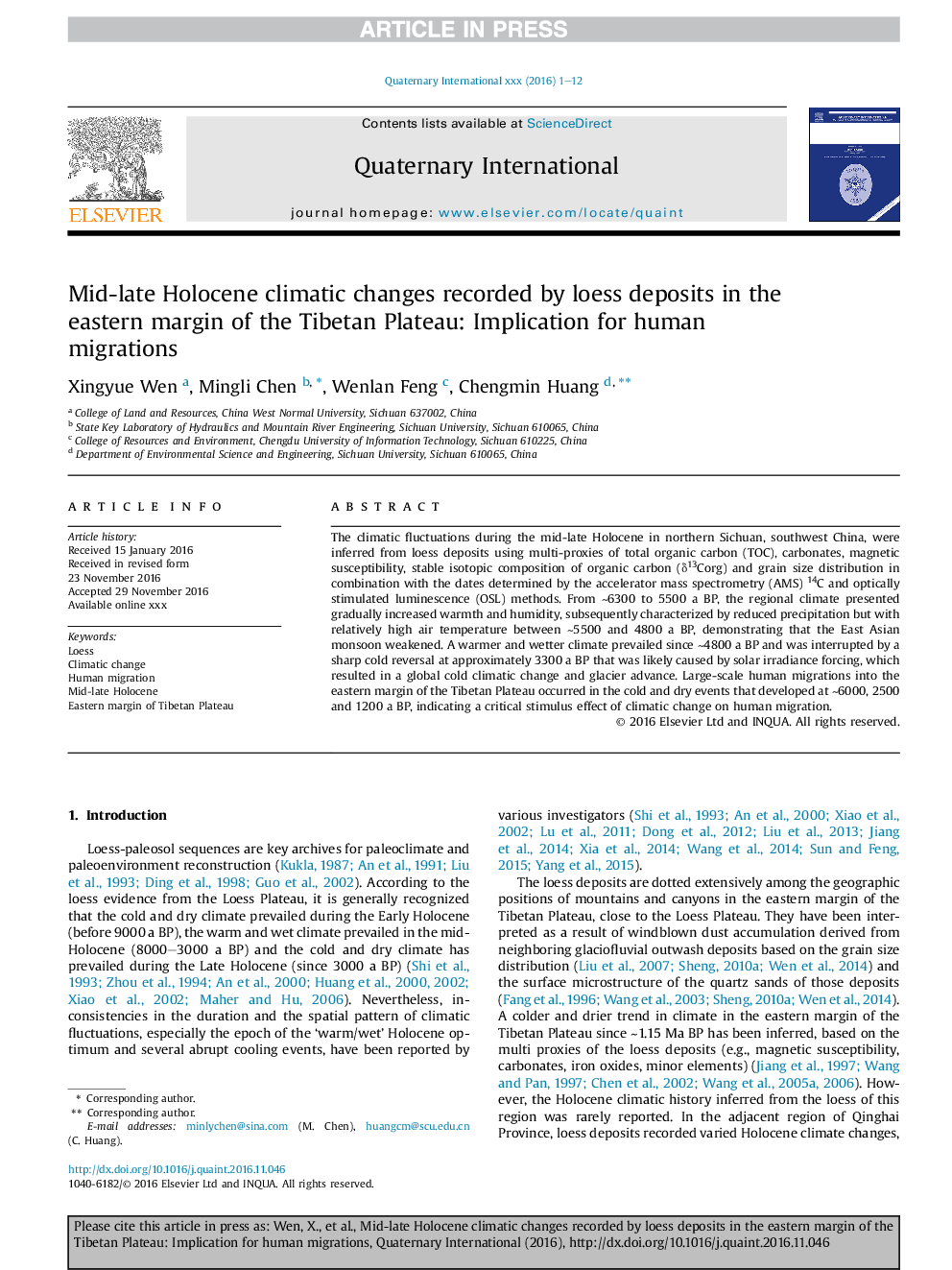| Article ID | Journal | Published Year | Pages | File Type |
|---|---|---|---|---|
| 5113246 | Quaternary International | 2017 | 12 Pages |
Abstract
The climatic fluctuations during the mid-late Holocene in northern Sichuan, southwest China, were inferred from loess deposits using multi-proxies of total organic carbon (TOC), carbonates, magnetic susceptibility, stable isotopic composition of organic carbon (δ13Corg) and grain size distribution in combination with the dates determined by the accelerator mass spectrometry (AMS) 14C and optically stimulated luminescence (OSL) methods. From â¼6300 to 5500 a BP, the regional climate presented gradually increased warmth and humidity, subsequently characterized by reduced precipitation but with relatively high air temperature between â¼5500 and 4800 a BP, demonstrating that the East Asian monsoon weakened. A warmer and wetter climate prevailed since â¼4800 a BP and was interrupted by a sharp cold reversal at approximately 3300 a BP that was likely caused by solar irradiance forcing, which resulted in a global cold climatic change and glacier advance. Large-scale human migrations into the eastern margin of the Tibetan Plateau occurred in the cold and dry events that developed at â¼6000, 2500 and 1200 a BP, indicating a critical stimulus effect of climatic change on human migration.
Related Topics
Physical Sciences and Engineering
Earth and Planetary Sciences
Geology
Authors
Xingyue Wen, Mingli Chen, Wenlan Feng, Chengmin Huang,
